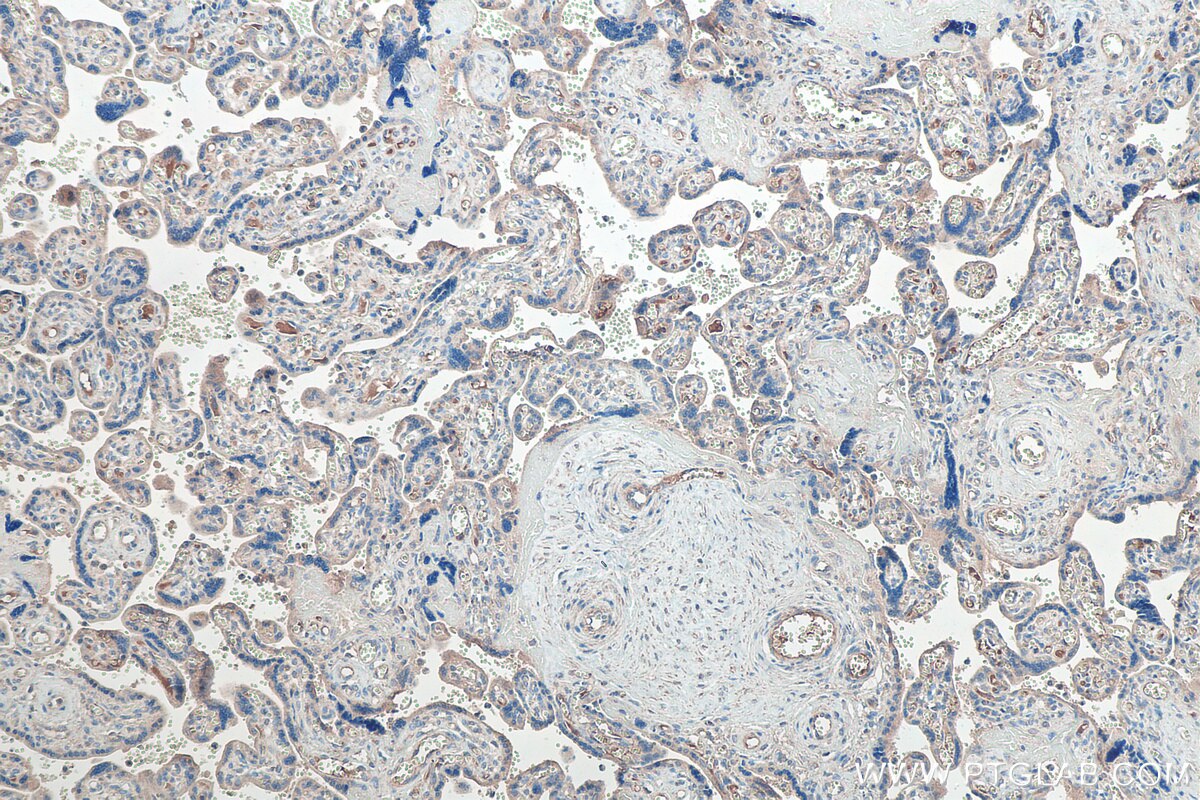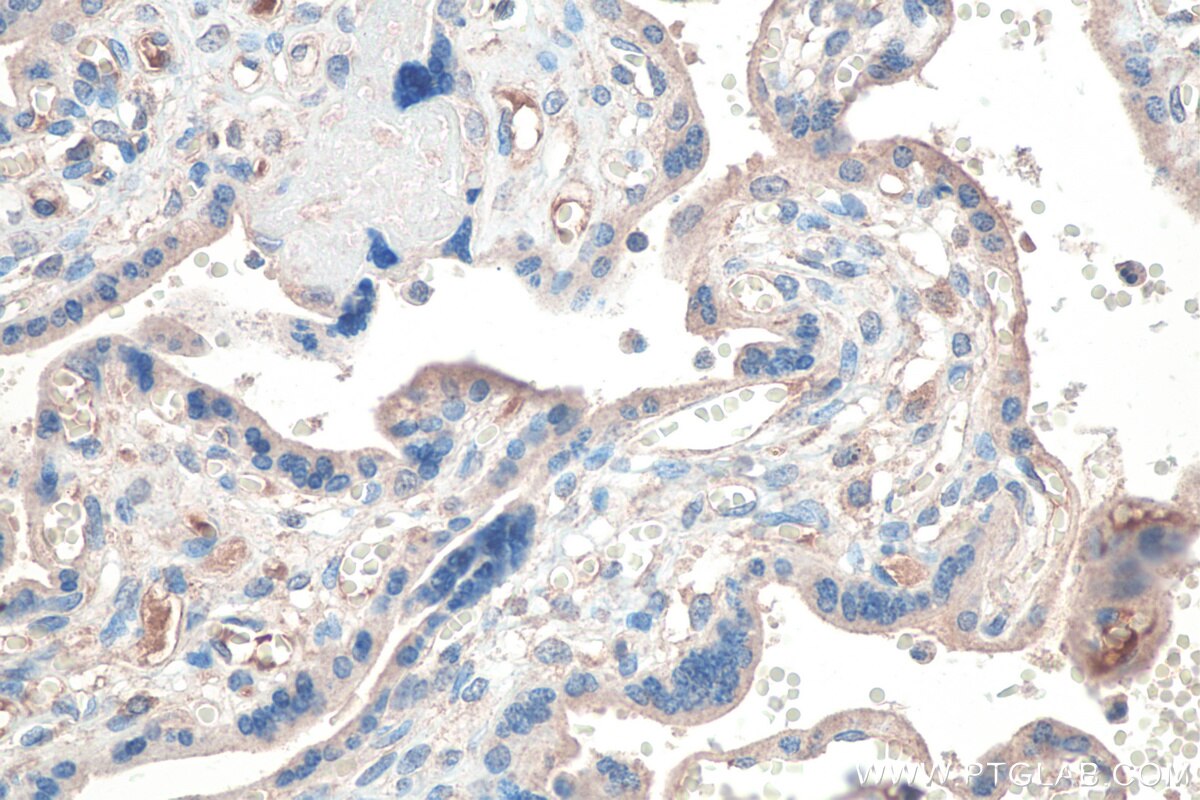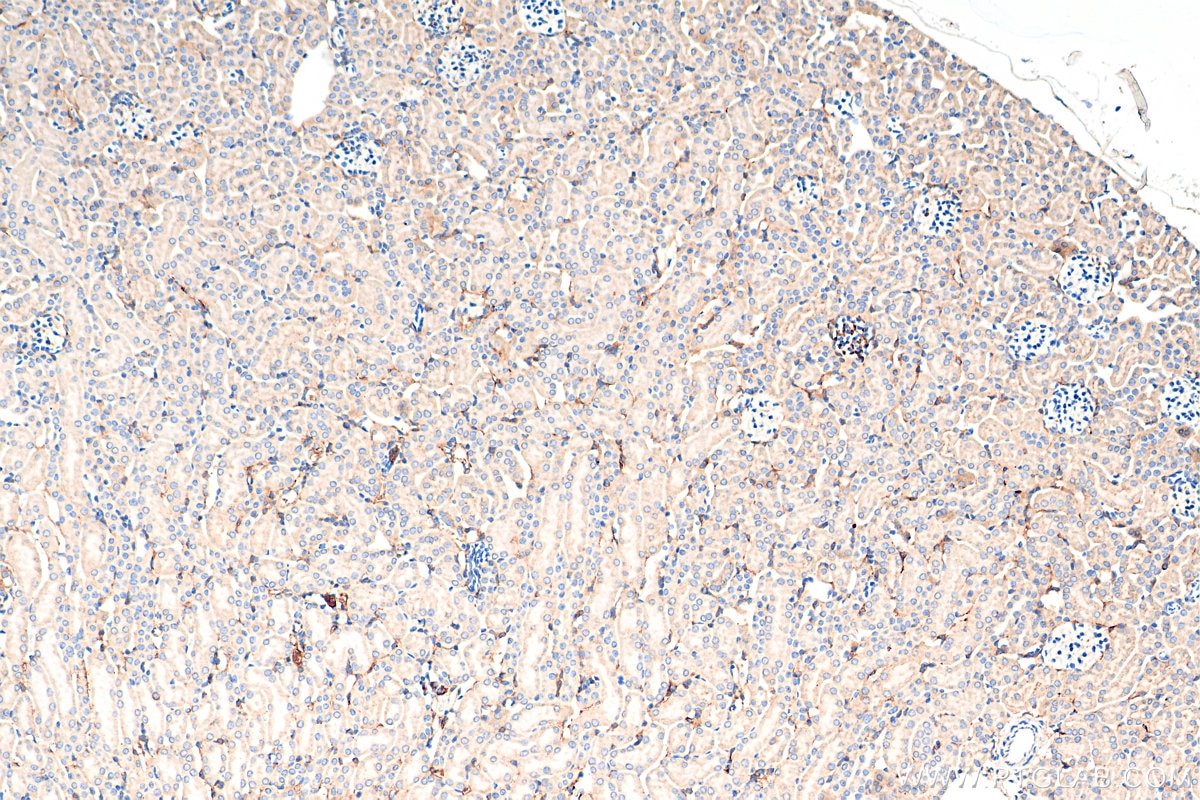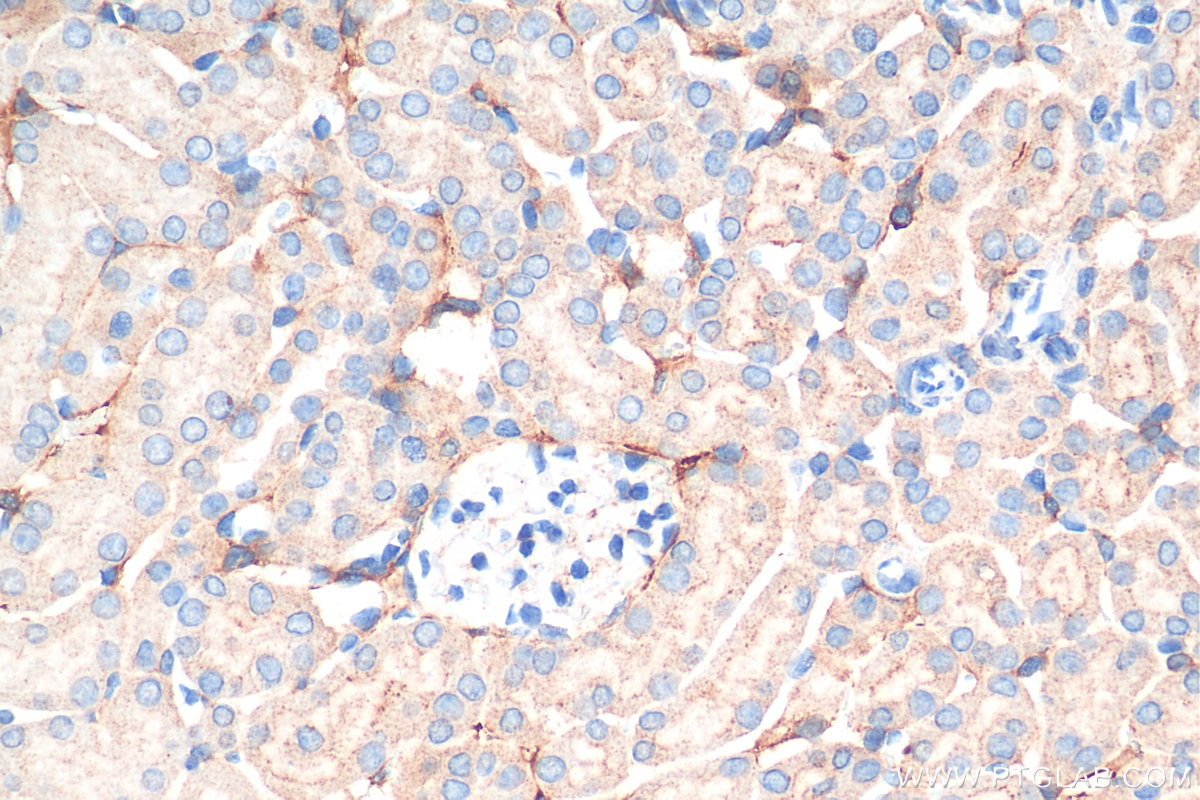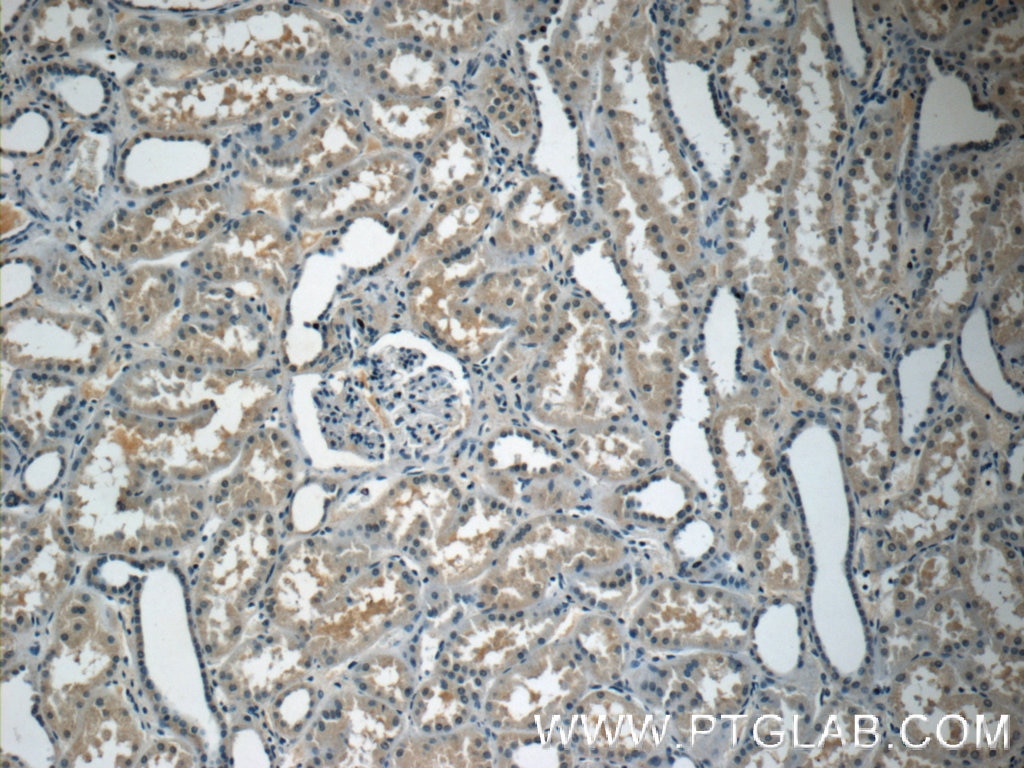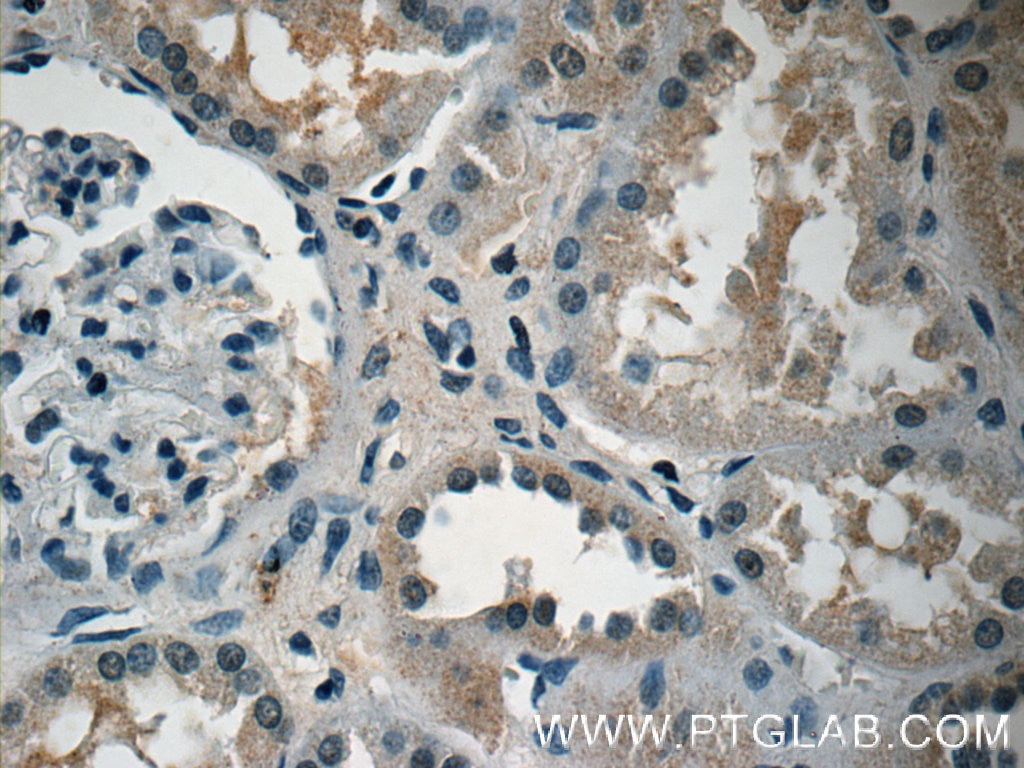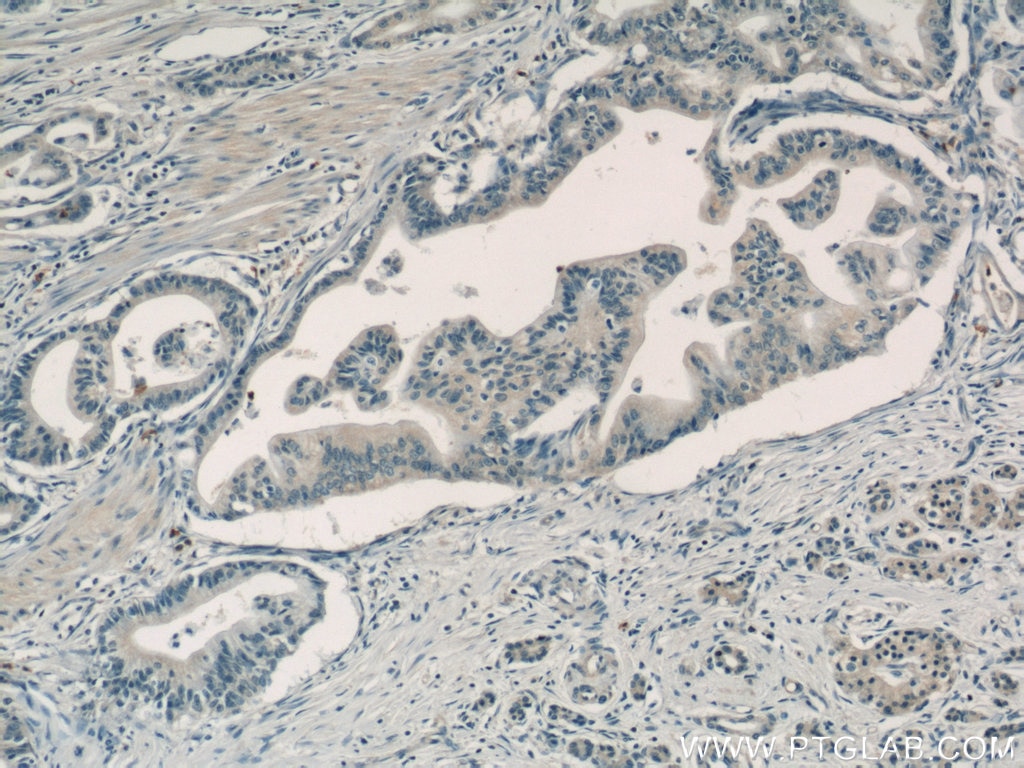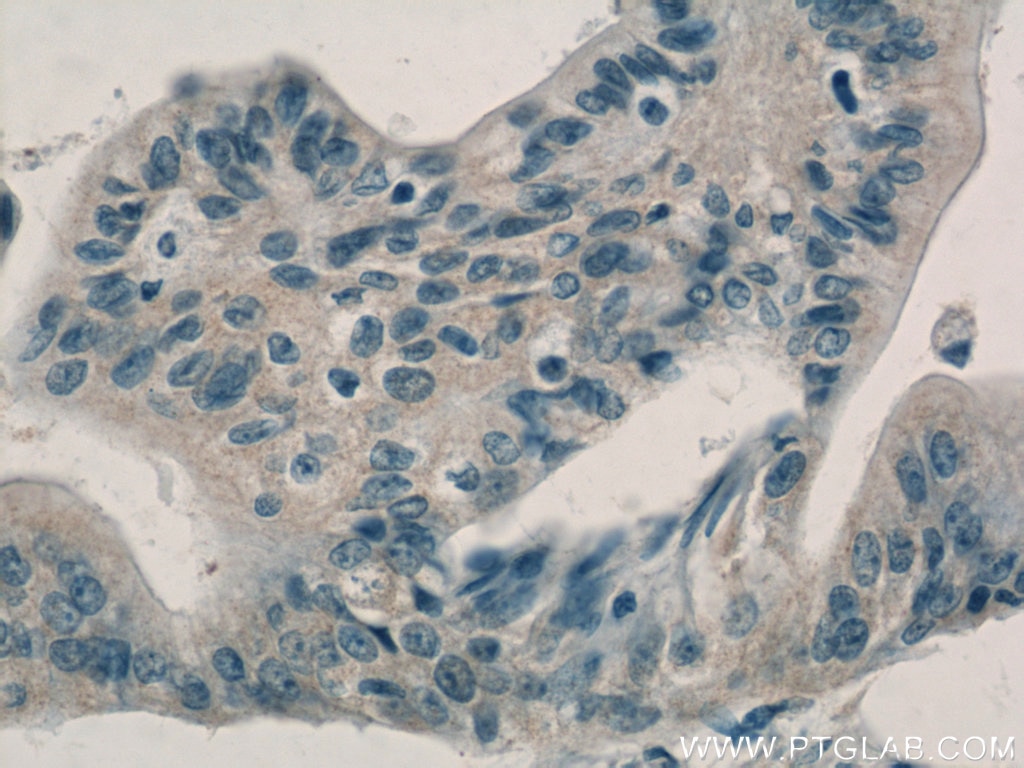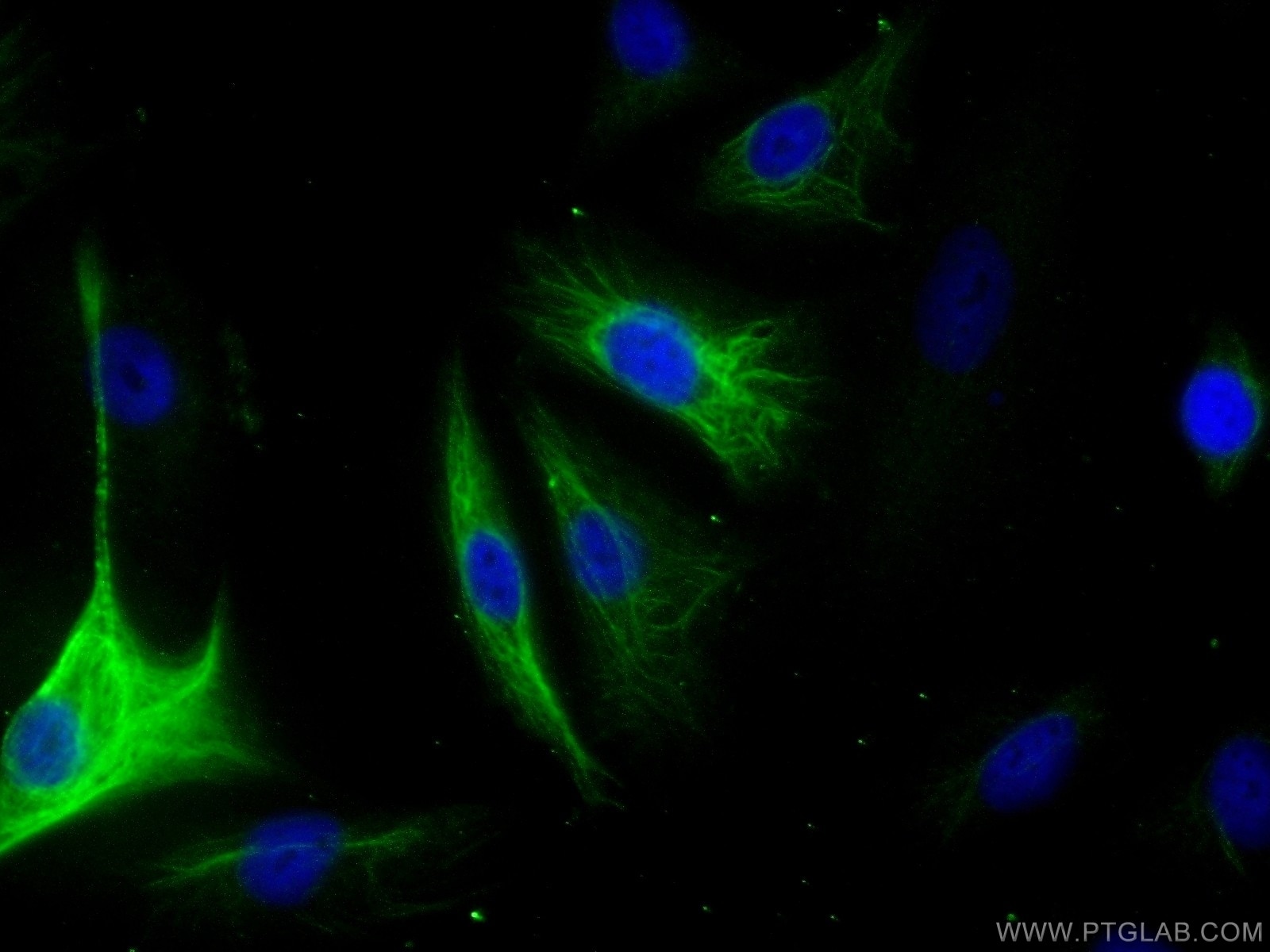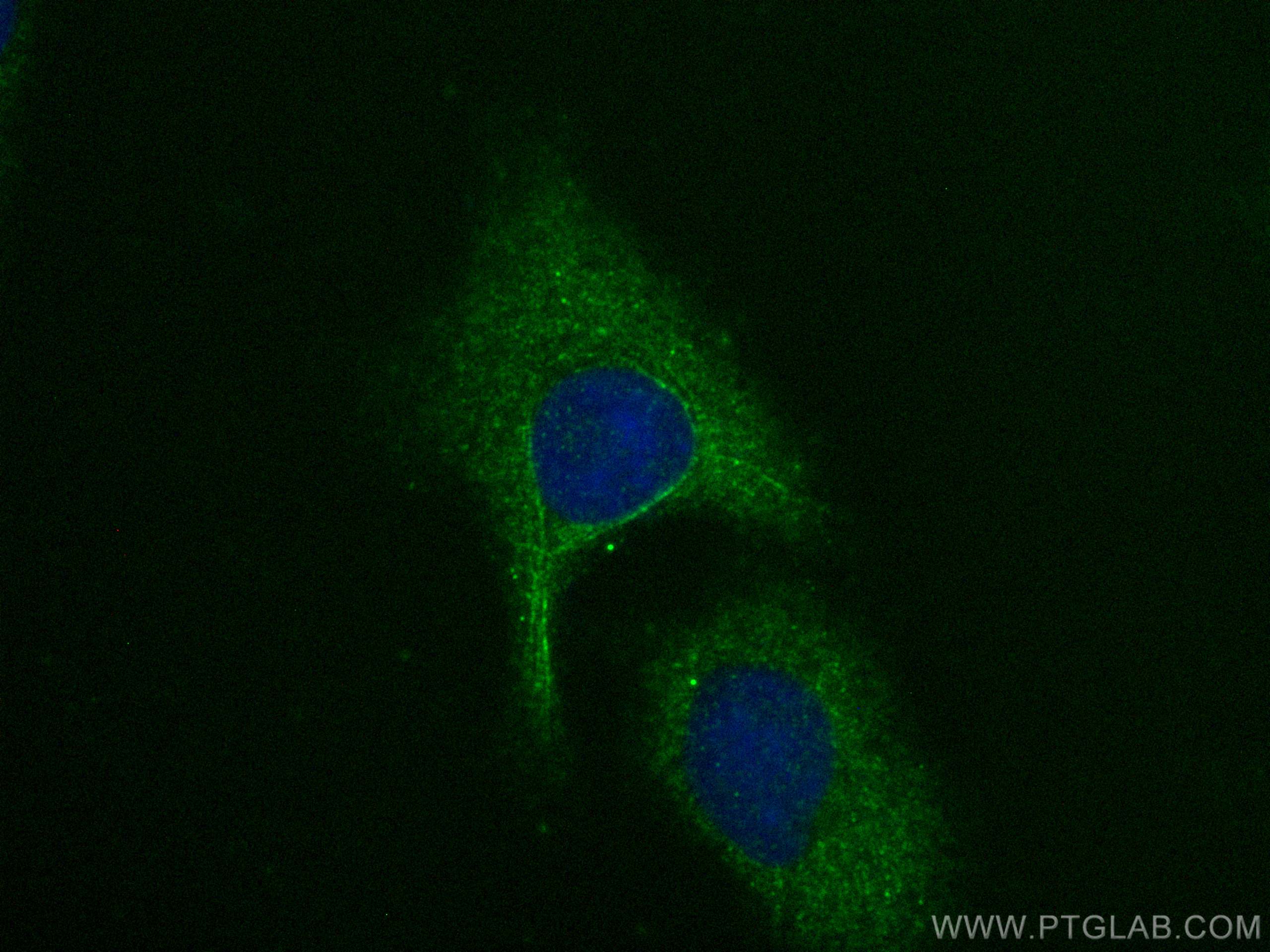- Featured Product
- KD/KO Validated
Adrenomedullin Polyklonaler Antikörper
Adrenomedullin Polyklonal Antikörper für IHC, IF/ICC, ELISA
Wirt / Isotyp
Kaninchen / IgG
Getestete Reaktivität
human, Maus
Anwendung
WB, IHC, IF/ICC, ELISA
Konjugation
Unkonjugiert
Kat-Nr. : 10778-1-AP
Synonyme
Geprüfte Anwendungen
| Erfolgreiche Detektion in IHC | humanes Plazenta-Gewebe, humanes Nierengewebe, humanes Pankreaskarzinomgewebe, Mausnierengewebe Hinweis: Antigendemaskierung mit TE-Puffer pH 9,0 empfohlen. (*) Wahlweise kann die Antigendemaskierung auch mit Citratpuffer pH 6,0 erfolgen. |
| Erfolgreiche Detektion in IF/ICC | A549-Zellen |
Empfohlene Verdünnung
| Anwendung | Verdünnung |
|---|---|
| Immunhistochemie (IHC) | IHC : 1:50-1:500 |
| Immunfluoreszenz (IF)/ICC | IF/ICC : 1:200-1:800 |
| It is recommended that this reagent should be titrated in each testing system to obtain optimal results. | |
| Sample-dependent, check data in validation data gallery | |
Veröffentlichte Anwendungen
| KD/KO | See 1 publications below |
| WB | See 3 publications below |
| IHC | See 2 publications below |
| IF | See 3 publications below |
Produktinformation
10778-1-AP bindet in WB, IHC, IF/ICC, ELISA Adrenomedullin und zeigt Reaktivität mit human, Maus
| Getestete Reaktivität | human, Maus |
| In Publikationen genannte Reaktivität | human |
| Wirt / Isotyp | Kaninchen / IgG |
| Klonalität | Polyklonal |
| Typ | Antikörper |
| Immunogen | Adrenomedullin fusion protein Ag1197 |
| Vollständiger Name | adrenomedullin |
| Berechnetes Molekulargewicht | 20 kDa |
| GenBank-Zugangsnummer | BC015961 |
| Gene symbol | Adrenomedullin/ADM |
| Gene ID (NCBI) | 133 |
| Konjugation | Unkonjugiert |
| Form | Liquid |
| Reinigungsmethode | Antigen-Affinitätsreinigung |
| Lagerungspuffer | PBS with 0.02% sodium azide and 50% glycerol |
| Lagerungsbedingungen | Bei -20°C lagern. Nach dem Versand ein Jahr lang stabil Aliquotieren ist bei -20oC Lagerung nicht notwendig. 20ul Größen enthalten 0,1% BSA. |
Hintergrundinformationen
Adrenomedullin (AM) and proadrenomedullin N-terminal 20 peptide (PAMP) are two small active hormones derived from the expression of a single gene (Adm) that is expressed throughout the GI tract, including the mucosal epithelium, glandular duct cells, neuroendocrine cells, and smooth muscle cells of the GI tract, between the oral cavity and the rectum (PMID:10782362, PMID:27345325). These two peptides coexist in GI cells, where they regulate many physiological functions including vasodilation, angiogenesis, anti-inflammation, organ protection, and tissue repair. AM suppresses inflammatory cytokine production in the intestinal mucosa, improves vascular and lymphatic function, mucosal epithelial repair, and intestinal barrier function in animal models with intestinal inflammation (PMID:27965594, PMID:29311984). Molecular mass species of 18, 14, and 6 kDa were identified in tumor cell lysates and presumably represent AM precursor, processed intermediates, and the authentic peptide, respectively. There is also a 22-kDa immunoreactive species in two cancer cell lines, H720 and MCF-7 (PMID: 8798536).
Protokolle
| PRODUKTSPEZIFISCHE PROTOKOLLE | |
|---|---|
| IHC protocol for Adrenomedullin antibody 10778-1-AP | Protokoll herunterladenl |
| IF protocol for Adrenomedullin antibody 10778-1-AP | Protokoll herunterladen |
| STANDARD-PROTOKOLLE | |
|---|---|
| Klicken Sie hier, um unsere Standardprotokolle anzuzeigen |
Publikationen
| Species | Application | Title |
|---|---|---|
J Cell Mol Med Adrenomedullin Inhibits the Efficacy of Combined Immunotherapy and Targeted Therapy in Biliary Tract Cancer by Disrupting Endothelial Cell Functions
| ||
Cells Differentiation Trajectory of Limbal Stem and Progenitor Cells under Normal Homeostasis and upon Corneal Wounding. | ||
Prostate Prostate fibroblasts enhance androgen receptor splice variant 7 expression in prostate cancer cells | ||
CNS Neurosci Ther Identification and validation of a glycolysis-related taxonomy for improving outcomes in glioma | ||
Cell Biosci Single-cell multi-omics analysis reveals candidate therapeutic drugs and key transcription factor specifically for the mesenchymal subtype of glioblastoma |
